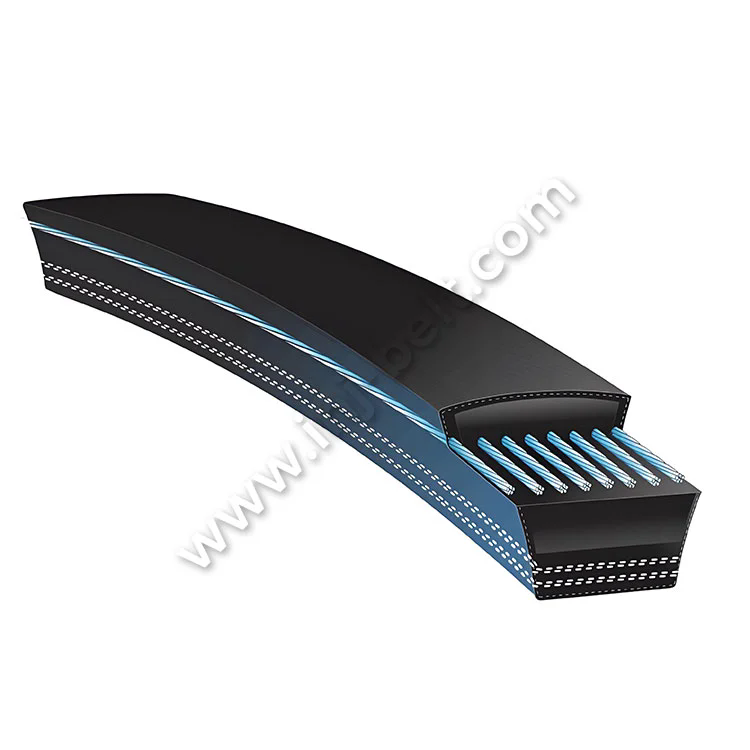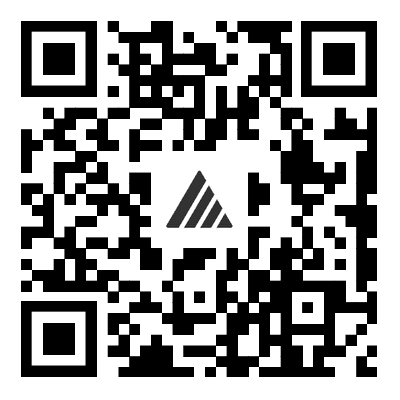Why Are Rubber V Belts Gaining Attention in Power Transmission?
2025-10-23
Rubber V belts are foundational components in many industrial and mechanical systems—and their importance is only growing.
What Are Rubber V Belts?
Rubber V belts are looped belts with a trapezoidal (wedge-shaped) cross-section, used to transmit power between rotating shafts via pulleys. They are typically made of a rubber compound base material, reinforced tensile cords (e.g., polyester, aramid), and a protective cover fabric or raw-edge construction.
These belts wedge into the sheave grooves: under load the belt’s shape causes it to grip more tightly, increasing friction and torque transmission efficiency, while requiring less width and tension compared to flat belts.
In industrial drives, rubber V belts remain a cost-effective, flexible solution. This article will examine key parameters such as cross‐section size, length, material composition, environmental resistance, and mechanical performance. For example:
| Parameter | Typical Value / Description |
|---|---|
| Cross-section profile | Classical sizes (A, B, C, D, E) or Narrow/Wedge (3V, 5V, etc) |
| Material base | Rubber compound (e.g., neoprene, EPDM) with embedded cords (polyester, aramid) |
| Protective cover | Fabric wrap or raw-edge cogged design (for high flex/heat) |
| Length / belt type | Continuous loop (endless) or link/banded for special drives |
| Operating environment | Temperature, oil/ozone exposure, speed, pulley diameter, alignment – all affect selection and life |
The purpose of this article is to guide selection and application of rubber V belts with a structured “what, why, how” approach, and to highlight future trends in the market.
Why Rubber V Belts Matter (Advantages, Applications & Considerations)
Advantages
-
Rubber V belts offer relatively high power density: the wedging effect of their cross-section increases the coefficient of friction without requiring very large belt widths or extreme tension.
-
They are relatively inexpensive and easy to install, replace, and maintain compared to more exotic drive systems (chains, gears, synchronous belts) for many general‐purpose applications.
-
Versatility: Suitable for a wide range of industries (HVAC, manufacturing, material handling, machine tools) thanks to different profiles, materials, and construction types.
-
When correctly chosen and maintained, they can provide long service life with minimal slip, low noise, and consistent performance.
Key Applications
Rubber V belts are found in drives for fans, pumps, compressors, machine tools, agricultural equipment, and many other systems where rotational power transmission is required.
Design Considerations & Constraints
-
Environmental exposure: Oils, ozone, UV light, high temperature – these can degrade rubber compounds or reduce belt life.
-
Drive layout: Small diameters, high speeds, or drives with limited centre-distance can challenge standard belt designs; in those cases cogged or raw‐edge belts may be better.
-
Proper tensioning, alignment, and pulley groove compatibility remain crucial to avoid premature wear or slippage.
-
While rubber V belts are cost-effective, they may not always match the performance of higher-end alternatives (e.g., aramid‐reinforced, raw‐edge designs) under the most demanding conditions.
Overall, rubber V belts remain a trusted workhorse in power transmission—and their proper application and selection are key to achieving reliable operation and low maintenance downtime.
How to Select, Install and Maintain Rubber V Belts
How to Select the Right Belt
-
Determine the drive’s required power, speed, pulley diameters, centre-distance, and duty cycle (continuous vs intermittent).
-
Choose the cross-section profile suited to the power and space constraints (for example classical vs wedge vs narrow-profile).
-
Select material construction appropriate for the environment: e.g., rubber compound with oil/ozone resistance, choice between wrapped vs cogged/raw‐edge depending on flexibility and heat dissipation needs.
-
Confirm dimensions: width, depth, length. In cases where original markings are worn off, measurement is needed (top width and depth, belt length).
-
Evaluate if banded, linked or multi-belt systems may provide better load distribution or serviceability in the given application.
How to Install Correctly
-
Clean the pulleys and ensure proper groove condition: worn, damaged pulleys will shorten belt life.
-
Align pulleys carefully; misalignment increases side-wall wear and heat.
-
Apply correct tension: too loose leads to slippage and wear; too tight leads to high bearing loads and early failure. Some manufacturers provide charts or tools.
-
After installation, run the drive for a short time under load, then inspect belt condition and pulley groove contact.
-
For maintenance, label installed belts with part number and installation date to track life and replacement cycles.
How to Maintain for Long Life
-
Routinely check belt tension, alignment, and condition (look for cracking, fraying, glaze, or side-wall wear).
-
Keep the drive free from contamination (dust, oil, coolant spray, ozone exposure).
-
Maintain ambient temperature within belt’s rated range; excessive heat accelerates rubber ageing.
-
Replace belts proactively based on hours, duty cycle and visual condition rather than waiting for failure.
-
Store spare belts in a cool, dark, dry environment away from ozone sources and direct sunlight.
Common Questions (Q&A)
Q: How can one identify the correct replacement size of a rubber V belt if the old one is worn and the markings are gone?
A: Measure the belt cross-section width and depth, identify the number of grooves or type (A, B, C, 3V, 5V etc). Then measure the belt length (outside length or pitch length as defined by manufacturer). Use these dimensions to match the replacement part.
Q: What is the difference between a wrapped rubber V belt and a raw-edge (cogged) rubber V belt, and when should each be used?
A: A wrapped belt has a fabric covering to protect the rubber and cords; it is quieter and cheaper but less flexible and less capable in very high power or very small pulley diameter drives. A raw-edge cogged belt has cuts (cogs) on the inner side and no fabric wrap, allowing better flexibility, higher power, smaller pulley diameters, cooler running, and often energy-savings. Use raw-edge when space is tight, pulley size is small, or high speed and higher power demand exist.
4. What Is the Future Trend for Rubber V Belts and How Should Users Prepare?
Emerging Trends
-
Increased efficiency demands: as industries move toward energy-savings and sustainable operation, belt drives that deliver lower losses, cooler running and higher reliability are gaining focus. Raw-edge and advanced materials support this.
-
Materials innovation: rubber compounds with improved ozone resistance, higher temperature capability, better wear resistance, and cords using aramid or other high-performance fibers. The comparison of rubber vs Kevlar (aramid) belts shows that while rubber remains standard for many uses, higher classes of drive may shift toward aramid.Refer to the analysis of rubber vs Kevlar belts.
-
Smart monitoring and predictive maintenance: sensor integration (belt tension sensors, vibration monitoring) will allow belt health to be tracked in real time, reducing downtime and avoiding catastrophic failure.
-
Compact drives and automation: As machinery becomes smaller, faster and more compact (automation, robotics, electric vehicles, packaging machines) belts must adapt – shorter centre distances, higher speeds, more bends. Narrower wedge profiles and cogged designs will be increasingly useful.
-
Global supply chain and customisation: As industries diversify their locations and applications, availability of custom belt profiles, lengths, materials and rapid lead-times become more critical.
How Users Should Prepare
-
Review the current drive systems and assess if they are optimised: is there unnecessary energy loss, excessive downtime, frequent belt replacements?
-
Evaluate whether upgrading to improved belt designs (tighter tolerances, cogged profiles, advanced compounds) can reduce maintenance and energy cost.
-
Plan belt inventory and maintenance cycles: moving from reactive replacements to scheduled replacements based on condition and data.
-
Engage with belt manufacturers or suppliers early to leverage new materials and track availability for custom lengths or profiles.
-
Train maintenance staff on proper installation, tensioning, alignment, and how to read belt condition signals (wear, cracks, heat damage).
Why This Matters for Procurement and Engineering
Selecting a high-quality rubber V belt drive system is more than just choosing a belt cost. It’s about system reliability, lifetime cost (including downtime and energy), compatibility with future automation, and adaptability. Brands that invest in advanced materials and manufacturing will provide a competitive edge in longevity and performance.
Final Thoughts & Brand Introduction
In summary, rubber V belts continue to be indispensable in power transmission for their cost-effectiveness and versatility. Understanding what they are, why they matter, how to select and maintain them, and what's ahead in terms of trends, allows engineers, procurement professionals and maintenance teams to make informed decisions and optimise system performance. For users seeking a trusted solution, brand INJ offers a range of rubber V belt products engineered for reliability, wide application coverage and global support. For more information about INJ belt solutions and to discuss your specific drive requirements, contact us. Contact Us to start your application assessment and secure long-term performance.



